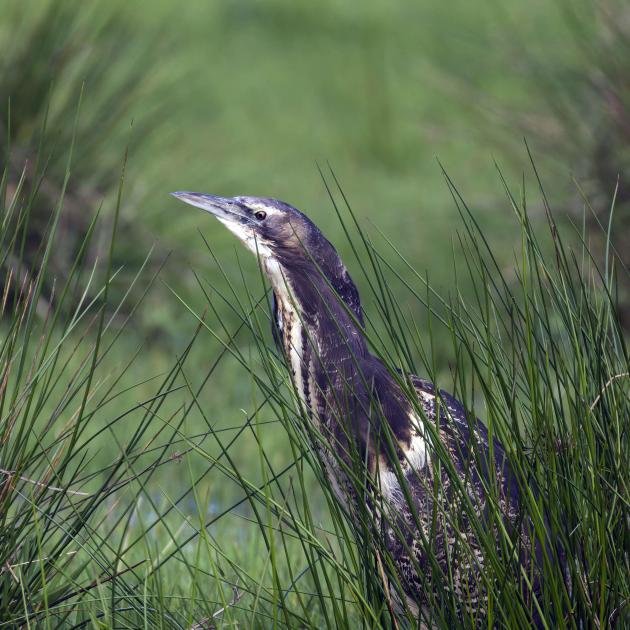
The Otago Regional Council said in a statement yesterday a collaborative project was under way to identify locations where rare wetland birds were found in the Otago region, focusing on the critically endangered Australasian bittern or matuku-hūrepo.
Funded by the council, the project is led by the Otago branch of Birds New Zealand with support from the Department of Conservation (Doc), Forest and Bird, Te Nukuroa o Matamata, Tiaki Maniototo and landowners and community groups across the region.
The Australasian bittern is critically endangered in New Zealand, with fewer than 50 estimated in Otago, and fewer than 1000 across the country.
One estimate put the number at fewer than 300, the statement said.
"The project is to identify locations for matuku-hūrepo in Otago over a five-year period to inform their future management," council senior scientist — terrestrial ecology Dr Scott Jarvie said.
"Spotting these elusive native birds is now a rare privilege, because their numbers have dramatically declined following destruction of 90% of their wetland habitat across New Zealand since European arrival."
They are also hard to find.
Due to their streaky brown-and-cream feathers they can hide within reeds, vanishing in an instant by either slipping away silently or striking their "freeze" pose — bill pointed skyward, swaying with the raupō (bulrushes).
Each spring, male birds call to attract females at dawn and dusk.
Their call is a low-pitched resonating boom that can carry for kilometres across wetlands.
Birds New Zealand Otago representative Dawn Palmer said the call helped locate the birds.
"Over the last three breeding seasons, we have identified matuku-hūrepo at several locations, confirming that bittern are at least moving through the wetland habitats of Otago."
Bittern booms have been recorded in the Catlins area and Sinclair Wetlands, Lake Tuakitoto and Akatore in Coastal Otago. They have also been sighted in the Maniototo, Central Otago, near Glenorchy and Coronet Station.
Birds NZ member Bruce McKinlay said while it was encouraging to detect bittern in these locations, more information was needed from across Otago for this highly mobile bird species.
There will be more listening and recording in more locations this coming breeding season, which it is hoped will identify more sites being used by bittern.
Forest and Bird’s Catriona Gower will be supporting the upcoming Great Matuku Muster, which calls on people to listen for the booms of the male bittern. — Allied Media











